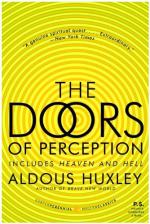
|
| Name: _________________________ | Period: ___________________ |
This quiz consists of 5 multiple choice and 5 short answer questions through Book 2: Appendix 3.
Multiple Choice Questions
1. How does the author describe our ancestors' winter diets in Appendix 2?
(a) They ate mostly meat and grains, with some fruit and vegetables.
(b) They ate dried meat and fruit which they stored during the autumn harvest.
(c) They ate pretty much the same diet they ate during the rest of the year.
(d) They ate no fruit, no vegetables, and very little meat or dairy.
2. Why is the first technique in Appendix 1 even less understood than mescalin use?
(a) There's a lot of variation in what people see while using this technique.
(b) Its specific effects on the brain are not well understood.
(c) No research has been performed to determine its long-term effects.
(d) It is used by very few people in comparison to mescalin.
3. How did "pyrotechny" begin in Europe, according to the author?
(a) A pursuit of ever-greater displays for leisure and religion.
(b) Alchemists' pursuit of a substance that would transform base metals into gold.
(c) Weaponry for sieges and naval battles.
(d) A source of propulsion for machinery and engines.
4. According to the author, what did one subject see while under the effects of mescalin and the second technique described in Appendix 1?
(a) A vision of Heaven.
(b) A Japanese landscape.
(c) A vision of Hell.
(d) A phoenix of undulating rainbow colors.
5. What happened to "pyrotechny" after the fall of Rome?
(a) The technology was lost, and development had to begin from scratch.
(b) It returned to being used exclusively for military purposes.
(c) Bigger and brighter displays were invented.
(d) It became used only in religious and national ceremonies.
Short Answer Questions
1. What practice has been undertaken by almost all religious aspirants, according to the author?
2. What happens when mescalin or LSD is used in conjunction with the second technique described in Appendix 1?
3. What are the first objects upon which the author intently focuses during the experiment?
4. What researcher performed experiments with touching parts of the brain with a fine electrode?
5. What is the first of the two methods the author discusses in Appendix 1 for inducing visionary experiences?
|
This section contains 406 words (approx. 2 pages at 300 words per page) |

|




